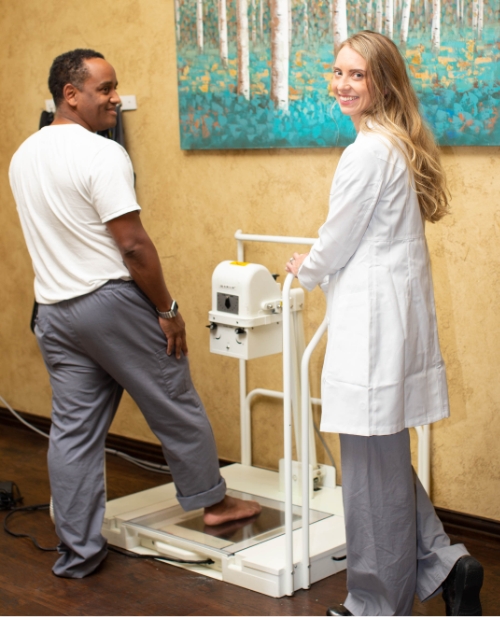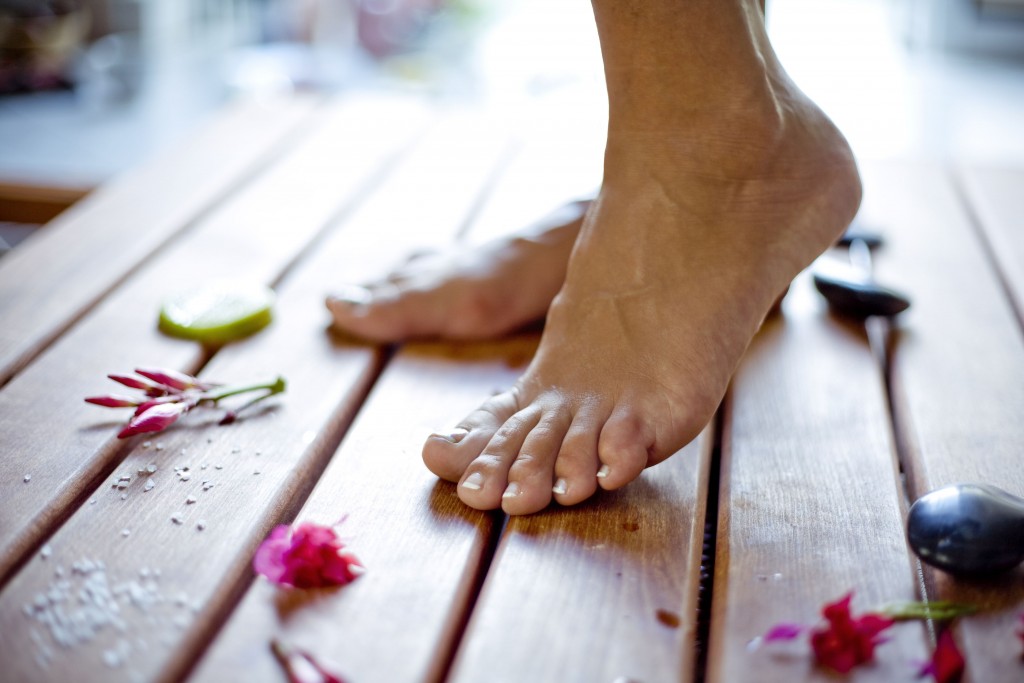Medically Reviewed by Dr. Rachel N. Verville
March 14, 2023

The National Library of Medicine states that up to 10% of adults can experience warts in their lifetimes. Warts—especially plantar warts—can be uncomfortable and frustrating, and they can keep coming back even after removal.
Keep reading to learn more about what plantar warts are, the symptoms to watch for, and the reasons they keep coming back.
What Are Plantar Warts?
Plantar warts are rough, small patches that develop on your feet. It is common to find them on the heels, toes, or in other areas of the foot that carry the most weight.
Sometimes called a verruca, a plantar wart has one main cause: human papillomavirus (HPV). You can get the HPV virus via cuts or skin breaks on the bottoms of the feet, which cause keratin to build up on the skin. This buildup causes the wart. The pressure can also cause the wart to start growing inwardly under a thick skin layer.
HPV is a common virus that grows in moist, warm places, like around swimming pools and locker rooms.
There are some common symptoms of plantar warts, including:
- Small, rough growths on the bottom of the foot
- Hard, thickened skin over the spot
- Black pinpoints in the area
- A cluster of growths on the sole
- Tenderness or discomfort when walking or standing
- Growth that interrupts the normal lines of the foot
- White or light lesions
The wart can last for months, and some warts last for years. Those who are more prone to plantar warts are people who have weakened immune systems, children and teenagers, people who have had warts before, and people who walk around barefoot in areas where the HPV virus may be present.
When to See a Doctor
Most plantar warts resolve on their own, but there are some signs that can tell you it may be time to reach out to a doctor for help.
If you find that the growth bleeds or if you notice changes in color or shape, you should contact a specialist. Other signs include a wart that keeps coming back, one you cannot resolve with over-the-counter medications, or one that interferes with your activities.
If you have diabetes or a weakened immune system, or if you are not sure if the growth is a wart, you want to reach out to a foot and ankle specialist.
Why Does a Plantar Wart Keep Coming Back?
It is common for plantar warts to return even after you have received treatment. If the wart comes back, this usually means the HPV is still in your body. Since the HPV that causes warts is mild, it is not a huge concern, but do remember to avoid scratching a wart because blood from it can cause other warts to grow.
Since warts can easily spread to other parts of the body, always wash your hands after touching the one on your foot.
Preventing Plantar Warts
You can prevent plantar warts by wearing sandals or other foot protection when walking around pools, locker rooms, and public showers. If you are under 26 years of age, you can also get the HPV vaccine, which can protect you against the virus. If you have a wart anywhere on your body, make sure to wash your hands after touching it.
If you have a plantar wart and want to prevent future ones, you should change your socks daily and keep the wart covered.
You also want to keep your feet clean and dry and remember not to pick or scratch at a wart. You should also avoid sharing shoes or socks with other people.
Treating Plantar Warts
The best treatment for plantar warts will depend on the severity of the discomfort you feel when walking and the length of time you have had the wart. To diagnose the wart, a specialist might just look at it, or they may remove the top layer of skin with a surgical blade to be able to check for the dots that signify clotted blood vessels.
For some people, switching to more comfortable shoes or wearing shoe inserts and supports can be a great help and can go a long way toward treating the wart.
You may also want to consider padding or taping the affected foot to help alleviate discomfort and pressure. If necessary, a podiatrist will also recommend orthotic devices to make mobility easier.
For more severe cases of plantar warts, you may have to get salicylic acid treatments or cryotherapy, which involves applying liquid nitrogen to the wart to remove it.
Most prescription-strength medications for warts contain salicylic acid. The acid helps remove the wart one layer at a time. These medications can also strengthen your immune system, making it more difficult for the wart to return.
Cryotherapy uses a spray or swab to apply liquid nitrogen to the wart. This freezes the wart, forming a blister around it. The dead skin falls off after a week or so. It is also an option that can help strengthen your immune system.
Podiatry Specialists Can Help
Plantar warts can negatively impact your life, making it harder to move and more difficult to enjoy your normal activities.
If you find that the plantar wart you have keeps coming back or seems to get worse, it is always important to reach out to a podiatrist to help you resolve the issue. They can diagnose the issue correctly and offer the best treatment option.
You can get the relief you need from plantar warts with a bit of professional help.













